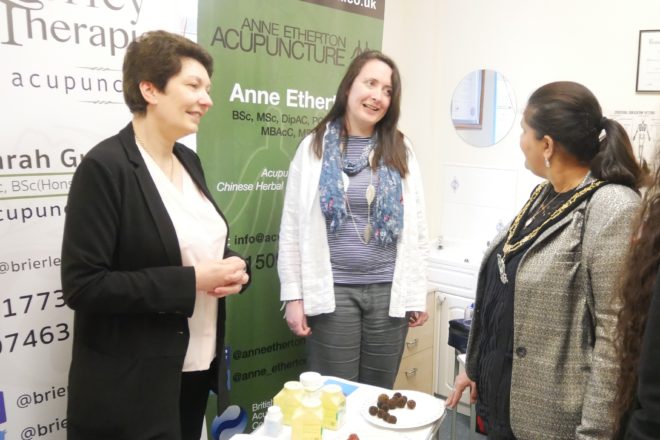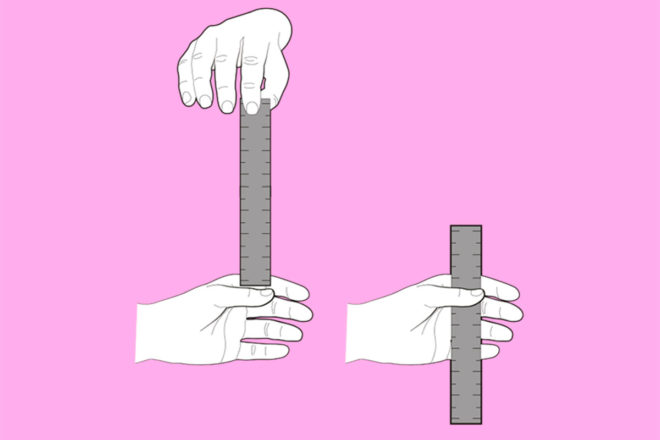
Clinic News
Well you did it - YOU raised the required £1700 for the new community defibrillator for Queens Road well done!
Thank you to everyone who helped in every way to support our 25th celebration event on Saturday 28th April 2018- although the weather was unkind it didn't stop the supporters joining us for cake and fizz.
Congratulations to all those that won one of the amazing prizes on the draw.
A list of winners and donating companies can be found on our website:
http://www.beestonchiropractic.co.uk/25th-anniversary-prize-draw-results/
Additional congratulations to Patricia Whiteley and Sean Burke who won the Clinic Quiz and Andrew's Challenges respectively - they go home with a memory foam orthopaedic pillow each.
We still have a few goodie bags available with super celebratory merchandise in if you would like one - proceeds will now go towards the long term up keep of the defibrillator.
We warmly welcome Anne Etherton and Sarah Gunn- Acupuncturists this month as they join the team at the clinic on Wednesday's and Thursday's respectively. We also extend a warm welcome to their patients who will be joining us here in their new home.
You will have been bombarded with news of the General Data Protection Regulations which leaves no business unturned who deals with your personal data. When you are next in for your appointment you will be asked to check your personal details and sign the form to allow us to safely store your data - thank you for your understanding and compliance.
The bank holidays this month will allow us to get out and about and active but do take care around the house and garden - check out what Alex had to say to Alan Clifford at Radio Nottingham - listen to the podcast on the website.
http://www.beestonchiropractic.co.uk/keep-mobile-and-supple-this-bank-holiday/

May Challenge - Rapid reactions!
This month we are going to test those lightening reaction skills! The faster you react to your environment, the less chance you have of injuring yourself. And it’s a nice fun one to check with the family! So to find out who’s the fastest…
What you need: Yourself, a partner, some space, and a 30cm ruler
Instructions:
- Your partner holds the ruler in the air and you have your fingers in the ‘ready to grip’ position however fingers and thumb must be open (approx. 5cm is suggested). The fingers are placed at the lowest part of the ruler (at 0cm).
- Once set up, within the next 5-10 seconds the partner will drop the ruler.
- Catch the ruler as quickly as you can!
- The lower down the ruler you catch (use the thumb pad to measure) the faster your reaction speed!

Are You Sitting Comfortably?
Too much of anything is a bad thing and sitting is no exception. Sitting down may often feel more comfortable than standing but it actually puts at least twice as much pressure on your low back compared to standing and eight times more pressure than lying down.
Sitting in office chairs for prolonged periods can be a major cause of back pain. Sitting is a static posture that can cause increased stress in the back, neck, arms and legs, and can add a tremendous amount of pressure to the back muscles and spinal discs.
Sitting badly often affects your body’s ability to deal with stress. Good posture means your bones are properly aligned and your muscles, joints and ligaments can work as nature intended. It means your vital organs are in the right position and can function at peak efficiency.
Good posture helps contribute to the normal functioning of the nervous system. And it is your nervous system that controls the output of adrenaline that is released in stressful situations.
Here are some important guidelines to help make sure that your office chair and work area is as comfortable as possible and causes the least amount of stress to your spine:
- Elbow measure
Begin by sitting comfortably as close as possible to your desk so that your upper arms are parallel to your spine. Rest your hands on your work surface (e.g. desktop, computer keyboard). If your elbows are not at 90-degrees, move your chair either up or down.
- Thigh measure
Check that you can easily slide your fingers under your thigh at the leading edge of the chair. If it is too tight, you need to prop your feet up with an adjustable footrest. If there is more than a finger width between your thigh and the chair, you need to raise the desk/work surface so that you can raise your chair.
- Lower-back support
Your bottom should be pressed against the back of your chair, and there should be a cushion that causes your lower back to arch slightly so that you don’t slump forward as you tire. This support is essential to minimise the strain on your back. Never slump or slouch in your chair, as that places extra stress on your spine and lumbar discs.
- Eye level
Close your eyes while sitting comfortably with your head facing forward. Slowly open your eyes. Your gaze should be aimed at the centre of your computer screen. If your computer screen is higher or lower than your gaze, you need to either raise or lower it.
- Armrest
Adjust the armrest of your chair so that it just slightly lifts your arms at the shoulders. Use of an armrest on your office chair allows you to take some of the strain off your neck and shoulders, and it should make you less likely to slouch forward in your chair.
Whichever chair you sit on, try to avoid static posture while sitting in office chairs. No matter how comfortable you are in your office chair, prolonged, static posture is not good for your back.
Without good posture, your overall health and total efficiency may be compromised. Because the long-term effects of poor posture can affect bodily systems (such as digestion, elimination, breathing, muscles, joints and ligaments), a person who has poor posture may often be tired or unable to work efficiently or move properly.
Try to remember to stand, stretch and walk for at least a minute or two every half hour. Moving about and stretching on a regular basis throughout the day will help keep your joints, ligaments, muscles and tendons loose, which in turn will help you feel more comfortable, more relaxed and more productive.

Six Benefits of Strength Training for the Over 50s
If you thought strength training was only for young people – or only for men – think again.
Strength training can have fantastic benefits for men and women of all ages, and is actually more important as we get older.
Strength training doesn’t necessary mean lifting huge weights or building big muscles. It can do, if that’s what you’re looking for. But it can also involve using lighter weights for a higher number of repetitions, using weights machines at the gym, going to a strength training exercise class, or just doing bodyweight exercises. This means there’s a type of strength training that can work for everyone. And all can be helpful!
Here are some of the specific benefits you can get from strength training.
- Keeping your bones strong
We can naturally start to lose bone density from around age 35 onwards. So, as we get into our 50s and beyond, we have an ever-increasing risk of weak bones and osteoporosis – a condition that affects around three million people in the UK1.
Women in particular can see a dramatic drop in bone density at menopause, because they lose the bone-protecting effects of oestrogen. But men are not exempt and can have osteoporosis too.
Weight-bearing exercise and especially strength training can help stop bone loss – and may even increase bone density, even after menopause in women2. This is because the action of muscles pulling on bones stimulates our bones to become stronger.

- Reducing risk of falls and injury / maintaining independence in old age
We naturally lose muscle mass and strength from our 30s onwards, too.
But why should this be a problem?
Well, we don’t only need good muscle strength to lift heavy things. We also need it to keep our body stable and to avoid falling over or getting injured. Falls can have especially serious consequences in older people, even causing permanent disability. And we need muscle strength to help us move as we want and go about all our daily tasks, whether it’s walking to the shops or getting up from a chair – in other words, being able to look after ourselves.
So, strength training and keeping our muscles strong can help us live long, healthy lives and stay independent into old age.
- Improving body shape and preventing weight gain
Strength training helps to tone all our muscles and keep us looking fit and healthy. And by maintaining muscle strength, we’re also less likely to gain body fat.
- Improving testosterone levels in men
Testosterone naturally starts to drop in men from around age 35 to 40, by around 1 to 3 per cent per year3. And by late 40s or early 50s, men can start to experience symptoms such as erectile dysfunction, low sex drive, weight gain (especially on the belly), fatigue, low mood or depression and poor sleep. This is sometimes known as the ‘male menopause’.
Exercise is a key way to help maintain testosterone levels as men get older. But not all exercise is equal! Strength training with heavy weights has been found to boost testosterone levels in men directly after exercise3. On the other hand, endurance-type exercise such as long-distance running or cycling may lower testosterone levels in the long run4.

- Reducing risk of diabetes
Strength training seems has been found to reduce risk of type 2 diabetes, too5. This may be because muscle helps the body to take glucose (sugar) out of the blood and store it6. So, good muscle mass means better blood sugar control.
- Supporting memory and cognition
Strength training and maintaining good muscle mass may help to keep our brain sharp as we get older and even help prevent Alzheimer’s disease7,8.
One study on 37 elderly women found that 12 weeks of strength training three times a week improved their cognitive capacity (memory, reasoning, learning, etc.) by 19% compared to a control group that did not do the training.9
References
- nhs.uk. Osteoporosis. [online] Available at: https://www.nhs.uk/conditions/osteoporosis/ [Accessed 5 Apr. 2018].
- Zehnacker CH, Bemis-Dougherty A. Effect of weighted exercises on bone mineral density in post menopausal women. A systematic review. J Geriatr Phys Ther. 2007;30(2):79-88.
- Vingren JL et al. Testosterone physiology in resistance exercise and training: the up-stream regulatory elements. Sports Med. 2010 Dec 1;40(12):1037-53.
- Hackney AC. The male reproductive system and endurance exercise. Med Sci Sports Exerc. 1996 Feb;28(2):180-9.
- Shiroma EJ et al. Strength Training and the Risk of Type 2 Diabetes and Cardiovascular Disease. Med Sci Sports Exerc. 2017 Jan;49(1):40-46.
- Scott D et al. Sarcopenia: a potential cause and consequence of type 2 diabetes in Australia’s ageing population? Med J Aust. 2016 Oct 3;205(7):329-33.
- Portugal EM et al. Aging process, cognitive decline and Alzheimer`s disease: can strength training modulate these responses? CNS Neurol Disord Drug Targets. 2015;14(9):1209-13.
- Hurley BF, Hanson ED, Sheaff AK. Strength training as a countermeasure to aging muscle and chronic disease. Sports Med. 2011 Apr 1;41(4):289-306.
- Smolarek Ade C et al. The effects of strength training on cognitive performance in elderly women. Clin Interv Aging. 2016 Jun 1;11:749-54.

Eating to Beat Inflammation: 5 Tips
Inflammation: it’s a natural process that happens in our body to help us heal from injury and help our immune system fight off invaders.
But too much inflammation – or inflammation that lasts longer than it should – can be a problem. Most importantly for chiropractors, inflammation is a factor in many types of pain, including joint and muscle pain, arthritis, back pain, and pain from injury that won’t go away.
Inflammation overload also plays a role in other problems such as skin conditions, and even – in an ‘invisible’ form – in serious health conditions such as heart disease, diabetes and Alzheimer’s disease.
While there are many things that can contribute to too much inflammation, one factor we can control is what we eat and drink.
So, here are five food-related tips to help you keep inflammation at bay.
- Load up on colourful veg and fruit
Most vegetables and fruit have great anti-inflammatory properties, thanks to their unique ‘phytonutrients’ such as flavonoids and carotenoids. These compounds are often responsible for vivid colours of fruit and veg, so you’ll find tons of flavonoids in purples and reds (think red cabbage, berries and pomegranate) and lots of carotenoids in oranges, light reds, yellows and greens (e.g. carrots, squash, tomatoes, peppers, and dark green leafy veg such as kale and spinach). So, think about ‘eating a rainbow’ of veg and fruit: it’s not just a cliché, especially when it comes to beating inflammation.
Ideally, eat more vegetables than fruit, as the sugars in fruit can add up. And eat whole fruit rather than drinking it in juice form.
- Eat lots of oily fish
Oily fish are anti-inflammatory superheroes thanks to the omega-3 fats they contain.
Oily fish include salmon, sardines, mackerel, anchovies, herring, trout and fresh (not tinned) tuna. Aim to eat three servings a week of one or more of these fish to build up your omega-3 stores.
Plant omega-3s such as those found in flaxseeds and chia seeds and their oils don’t have exactly the same benefits, as they provide a different type of omega-3. But they’re still healthy choices to include in our diet, and can be a substitute if you can’t eat fish.
- Keep it ‘real’
Generally speaking, the less you rely on processed foods, and the more you eat ‘real’ foods, the better.
‘Processed’ foods tends to mean anything that’s been made in a factory instead of being brought to you fresh or simply packaged. As well as junk foods, think supermarket baked goods, processed cheeses, most breakfast cereals, packet soups and ready meals. Not only are they generally low in natural vitamins, minerals and anti-inflammatory nutrients, they often contain added sugar or salt, as well as chemical additives that may do us more harm than good.
‘Real foods’, on the other hand, include vegetables and fruit, whole grains such as brown rice, beans and lentils, unroasted nuts and seeds, and minimally processed animal foods such as eggs, fish, whole cuts of meat and pure cheese or milk.
- Switch your vegetable cooking oils
It is best to switch all refined cooking oils such as sunflower oil and pretty much anything just labelled as ‘vegetable oil’ for more healthy options.
But how can they be bad for us, when they’ve long been touted as a healthy alternative?
Well, one problem is that polyunsaturated fats in their refined liquid form are quite fragile. When they’re heated to high temperatures during the refining process and cooking, they can easily become damaged. These damaged molecules may trigger more inflammation or ‘free radical’ damage in our own bodies when we consume too many of them.
The second problem is that vegetable oils tend to contain a very high proportion of omega-6 fatty acids. Now, while these are essential fats, when we get a lot of them in our diet they can have an overall pro-inflammatory effect (i.e. encouraging inflammation), especially when we’re getting a lot more omega-6 than omega-3 fatty acids.
So what can you use instead of vegetable oil? Well, a good choice for cooking is coconut oil. It contains primarily saturated fats, which – contrary to what you might think – are actually the safest and healthiest fats for high-temperature cooking such as roasting, frying or stir-frying, as they’re stable and have a high smoke point.
Olive oil is a great option for lower-temperature sautéing and for drizzling on salads or using in dressings. Olive oil is made up primarily of monounsaturated fats, which are more stable than polyunsaturated, and has been linked to numerous health benefits – for our heart in particular.
- Spice it up
Many spices have natural anti-inflammatory activity, with winners including turmeric and ginger. Add them liberally to homemade curries and Asian dishes (use coconut oil rather than vegetable oils, of course!). Make them into hot drinks, such as homemade turmeric latte or fresh ginger tea; or find them in the form of herbal teas.
Tip: if you’re buying powdered spices, seek out organic rather than just settling for your average supermarket version for the greatest benefits. And note the colour of your turmeric: it should be an almost fluorescent orange-yellow colour if it’s a good-quality one.
We treat all conditions that affect any muscle or joint in your body, from your head to your little toe! One of the most common complaints that we treat is back pain and Chiropractic is recommended by the government authority, the National Institute for Clinical Excellence (NICE) for acute and chronic back pain. Some of the other conditions that we treat are neck and headache, shoulder pain, leg and hip pain, knee and foot pain, sciatica and arthritis. Our registered Chiropractors all have at least five years of training. Treatment costs can be covered through most health insurers. If you are in any doubt, we are always very happy to talk with you on the phone to see if your condition will respond well to Chiropractic treatment. Call the clinic now to arrange an appointment time that works for you. 0115 9225085 If you would like to opt-out of receiving these newsletters please follow the unsubscribe link below, email alex@beestonchiropractic.co.uk or let us know at your next appointment.







